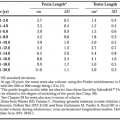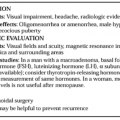CLINICAL APPLICATION OF BONE MINERAL DENSITY MEASUREMENTS
Paul D. Miller
Abby Erickson
Carol Zapalowski
Bone densitometry is accepted as a useful quantitative measurement for assessing skeletal status and predicting the risk of fragility fractures.1 Low bone mineral density (BMD) is the most important risk factor for fracture. BMD testing is an objective measurement, and extensive data demonstrate that bone mass and future fracture risk are inversely correlated. Low bone mass predicts fracture in the same way that high cholesterol and high blood pressure predict myocardial infarction and stroke, respectively.2
Historical risk factors cannot identify individual patients with low bone mass with adequate certainty.3 This does not discount the importance of assessing risk factors other than BMD for fracture. These risk factors add valuable information required for individual patient management decisions. Also, some risk factors can be modified to help reduce fracture risk.4 This is particularly true in the perimenopausal population and in patients with secondary conditions associated with bone loss.
Measurement techniques for quantitating BMD that use radioisotopes as their photon energy source have been replaced by techniques that use dual-energy x-ray sources.
Another technique, currently under evaluation, is quantitative ultrasound.4a Dual-energy x-ray absorptiometry (DXA) can be performed at several skeletal sites (e.g., hip, spine, finger, wrist, or heel) and does not require a water bath for the equalization of the soft tissue surrounding bone. DXA uses a dual-energy x-ray system to separate bone from soft tissue.
Stay updated, free articles. Join our Telegram channel

Full access? Get Clinical Tree






